View the spoiler for my guess at what I think it might be, but please first come to your own conclusion before looking at mine — I don't want to bias your guess.
My guess
Psilocybe cyanescens
They were found in mid-november in the Salish Coast region of Cascadia. They were growing out of woodchips composed of a mixture of western hemlock (majority), and western red cedar.
Side view of one full mature specimen:

A group with a sample of the substrate (the cap appears to be umbonate):

A closeup side view, and internal view of the stem (it appears to be hollow):
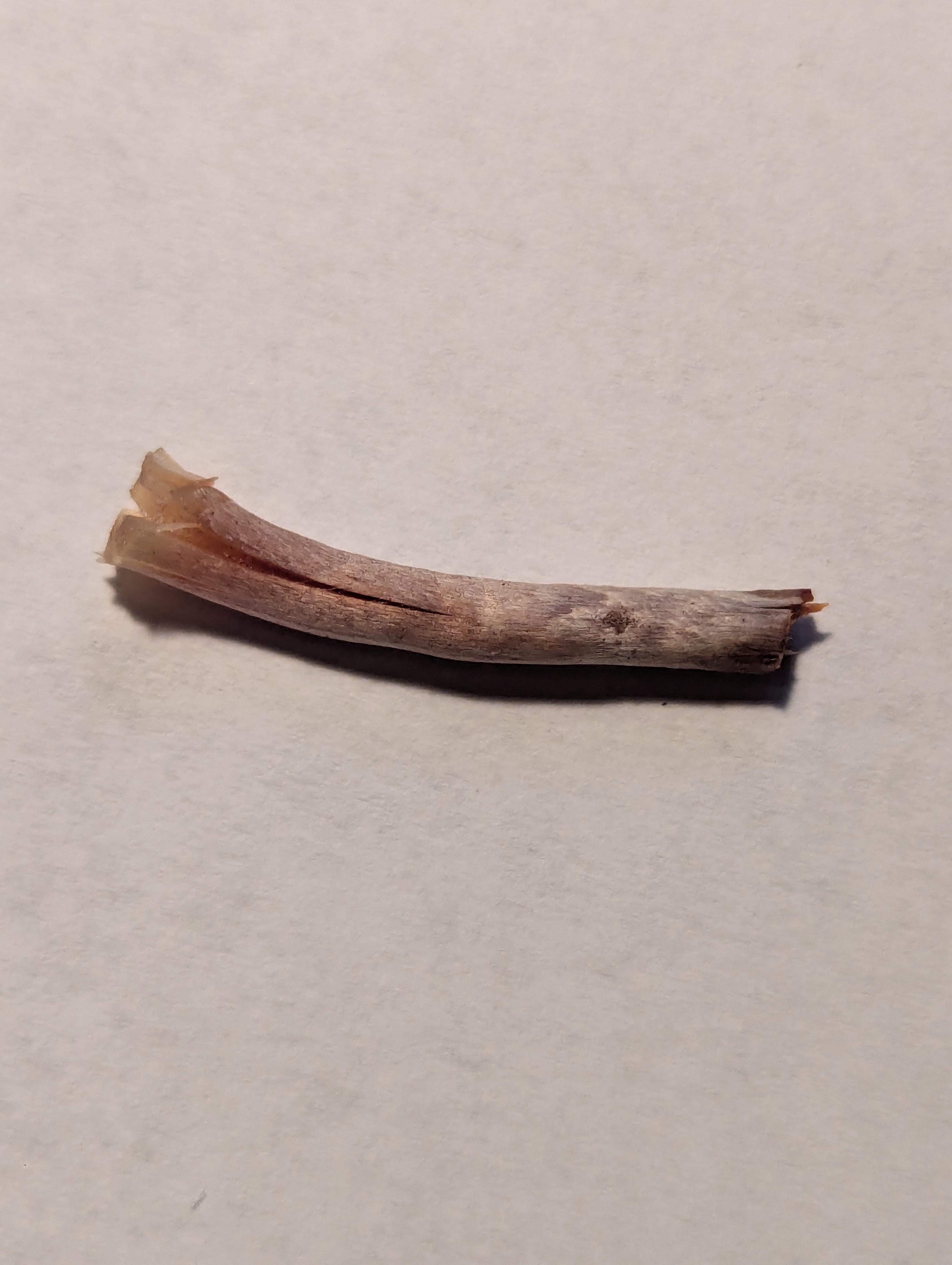
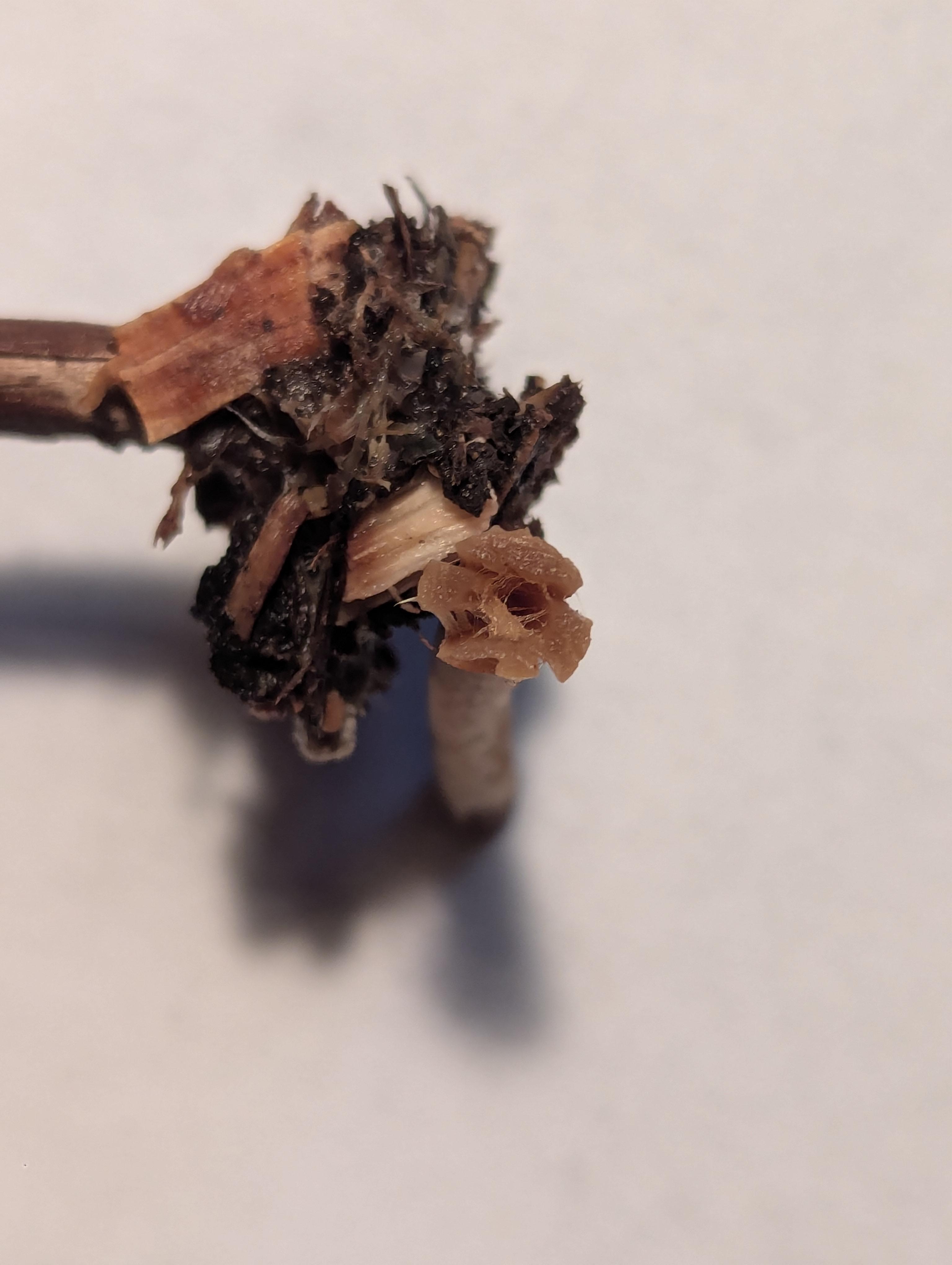
Cross section of the gills — they appear to be adnate, or sub-decurrent:
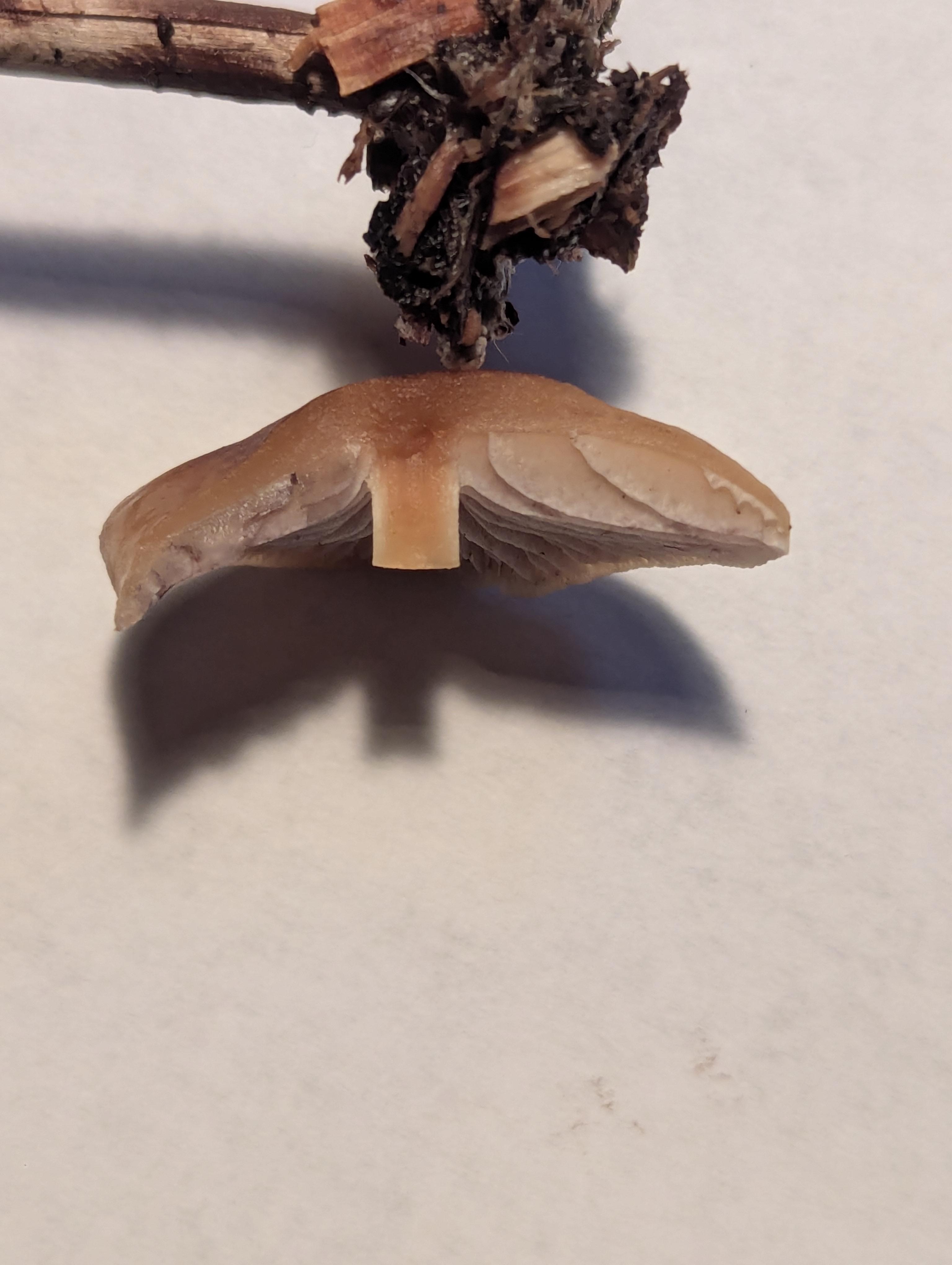
Underside of view of the gills:
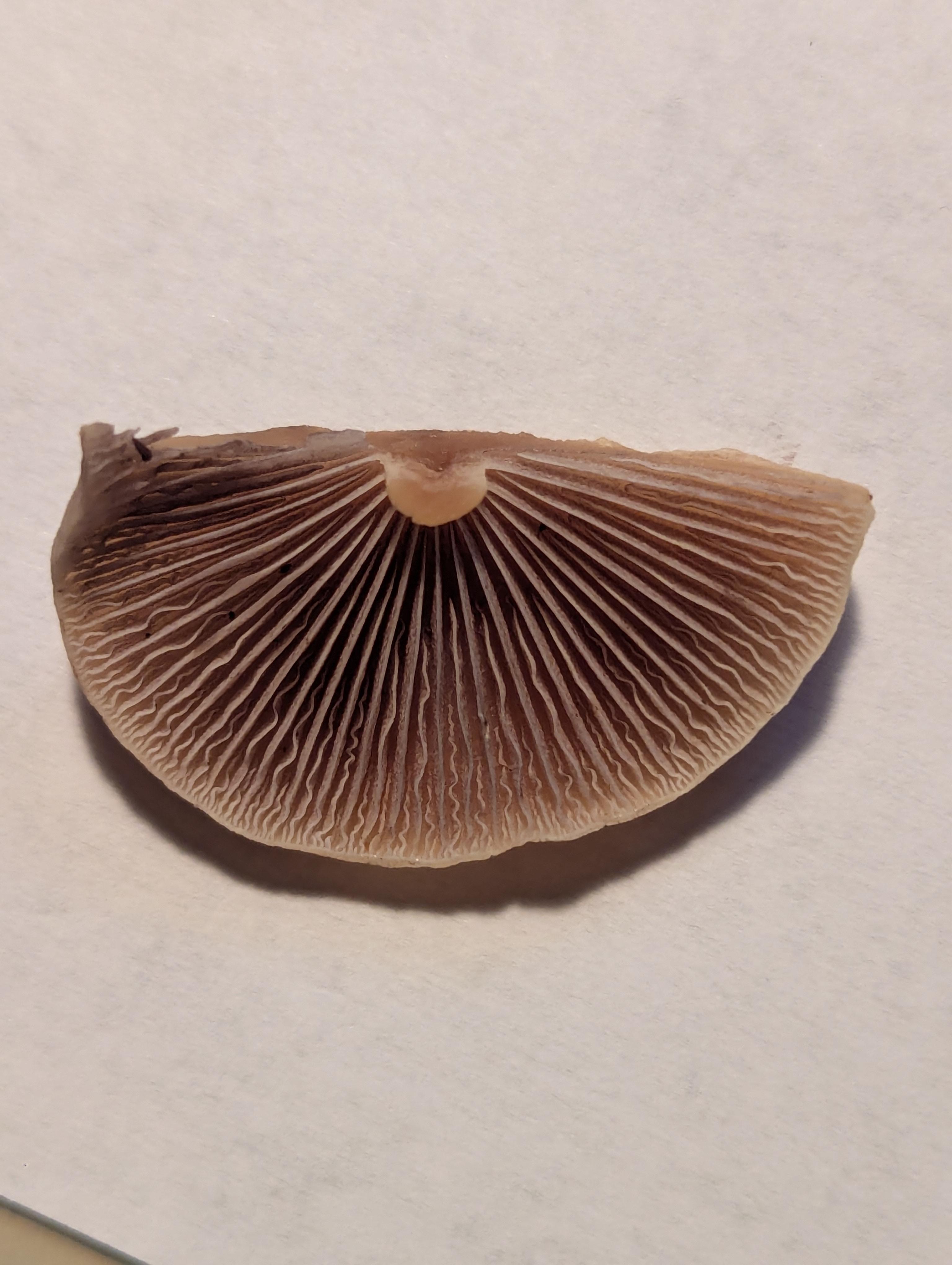
Spore print (first on white background (the split is due to two halves), second on a black background):
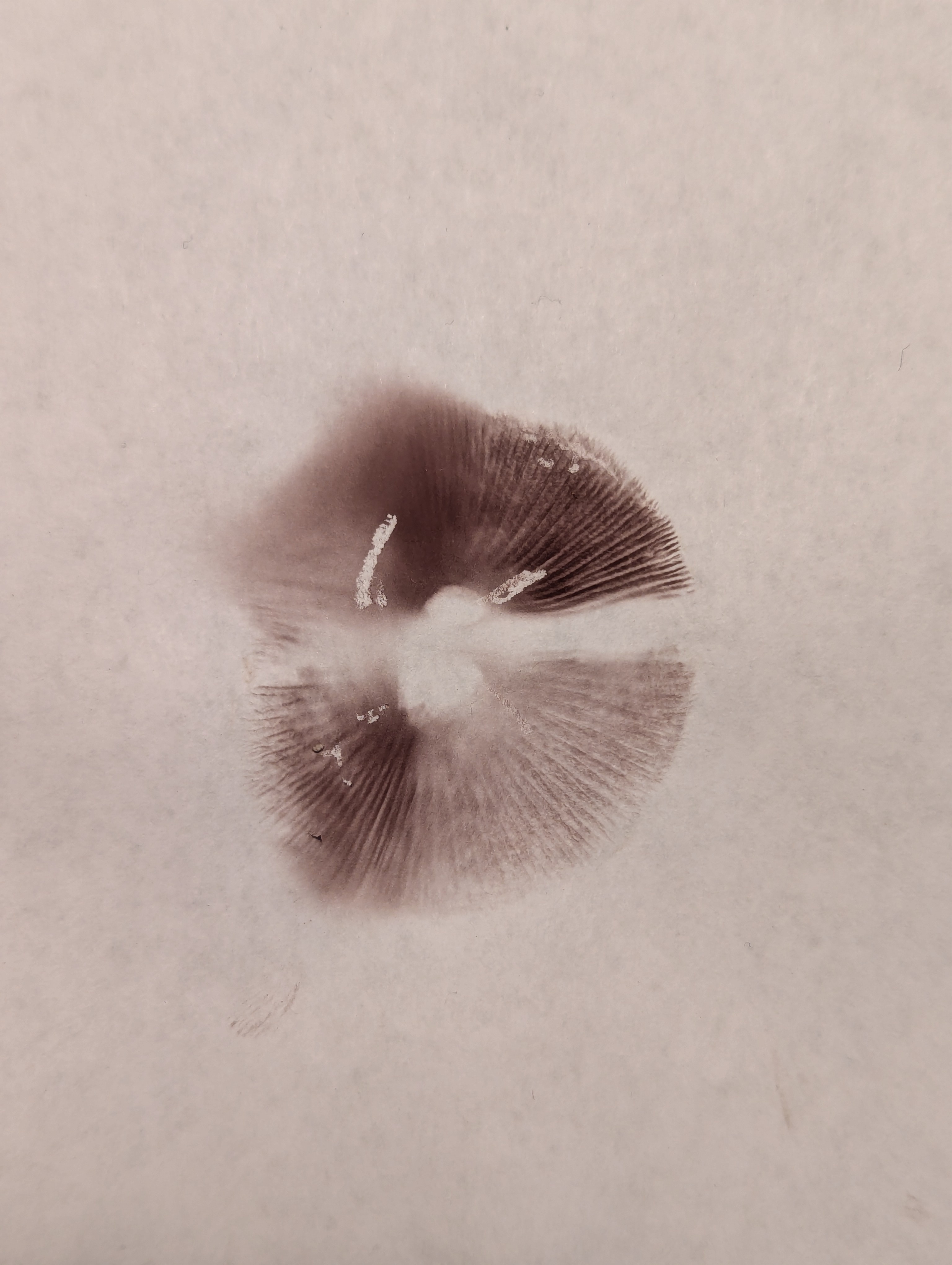
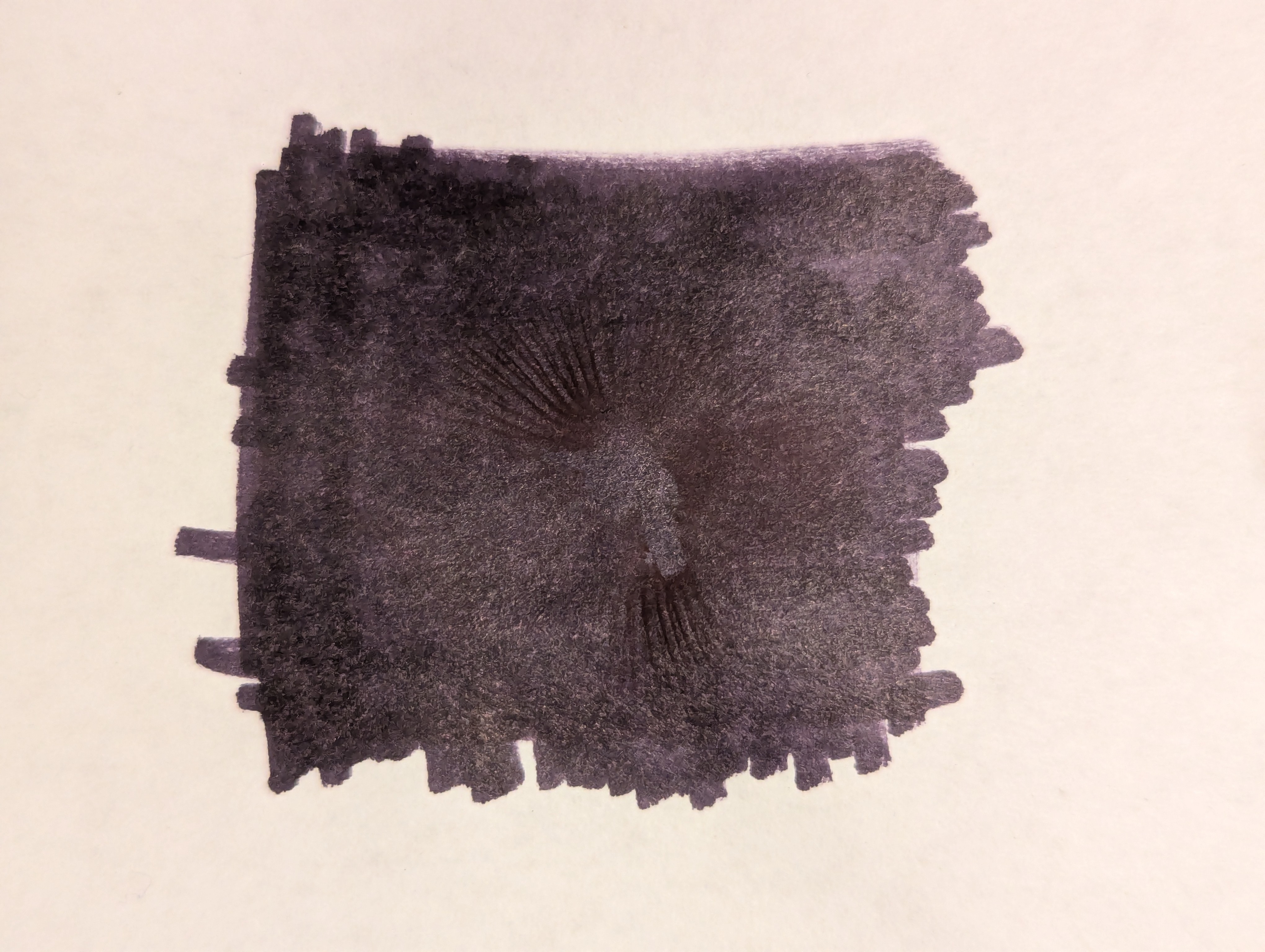
Examples specimens once dried:
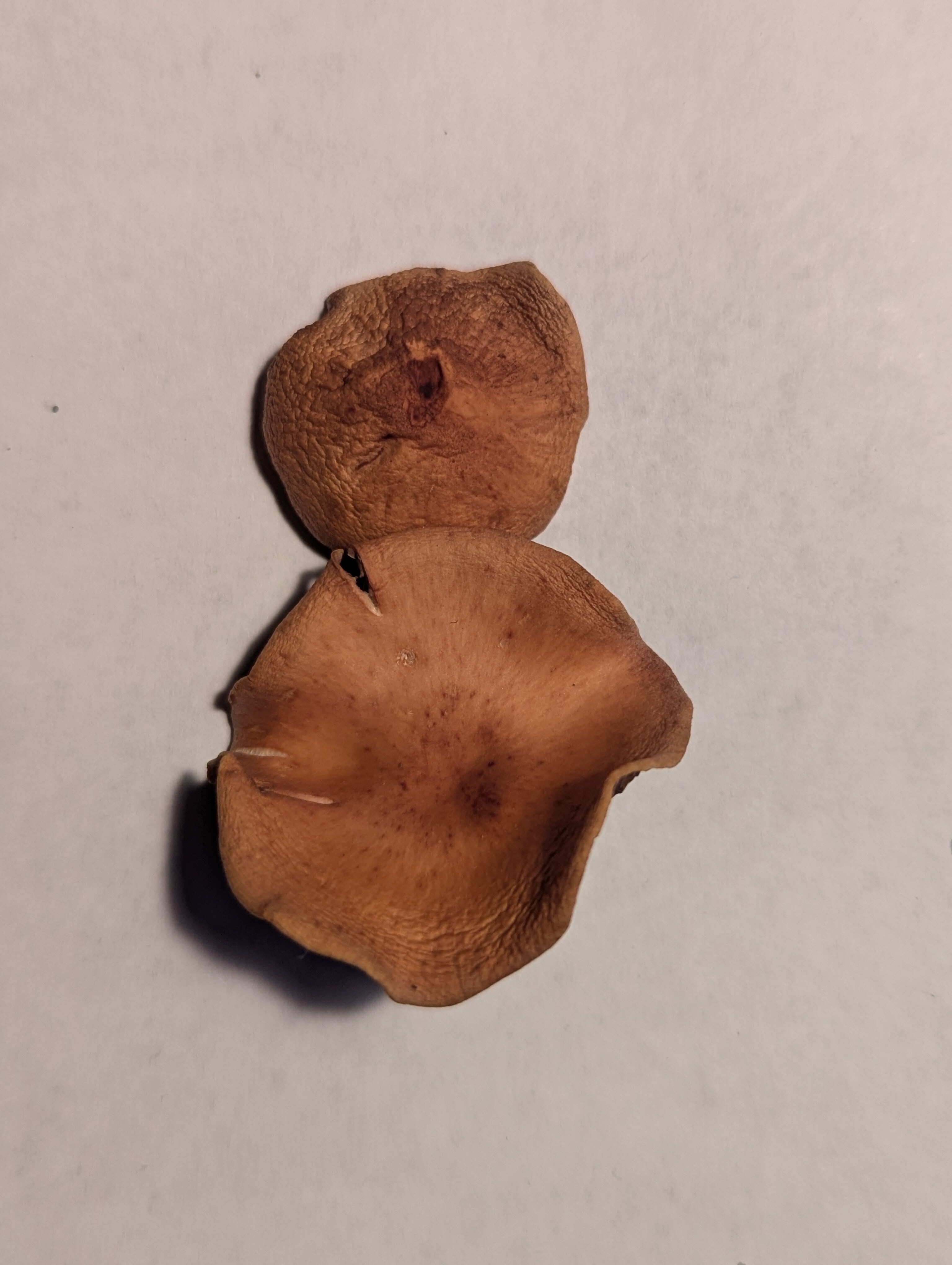
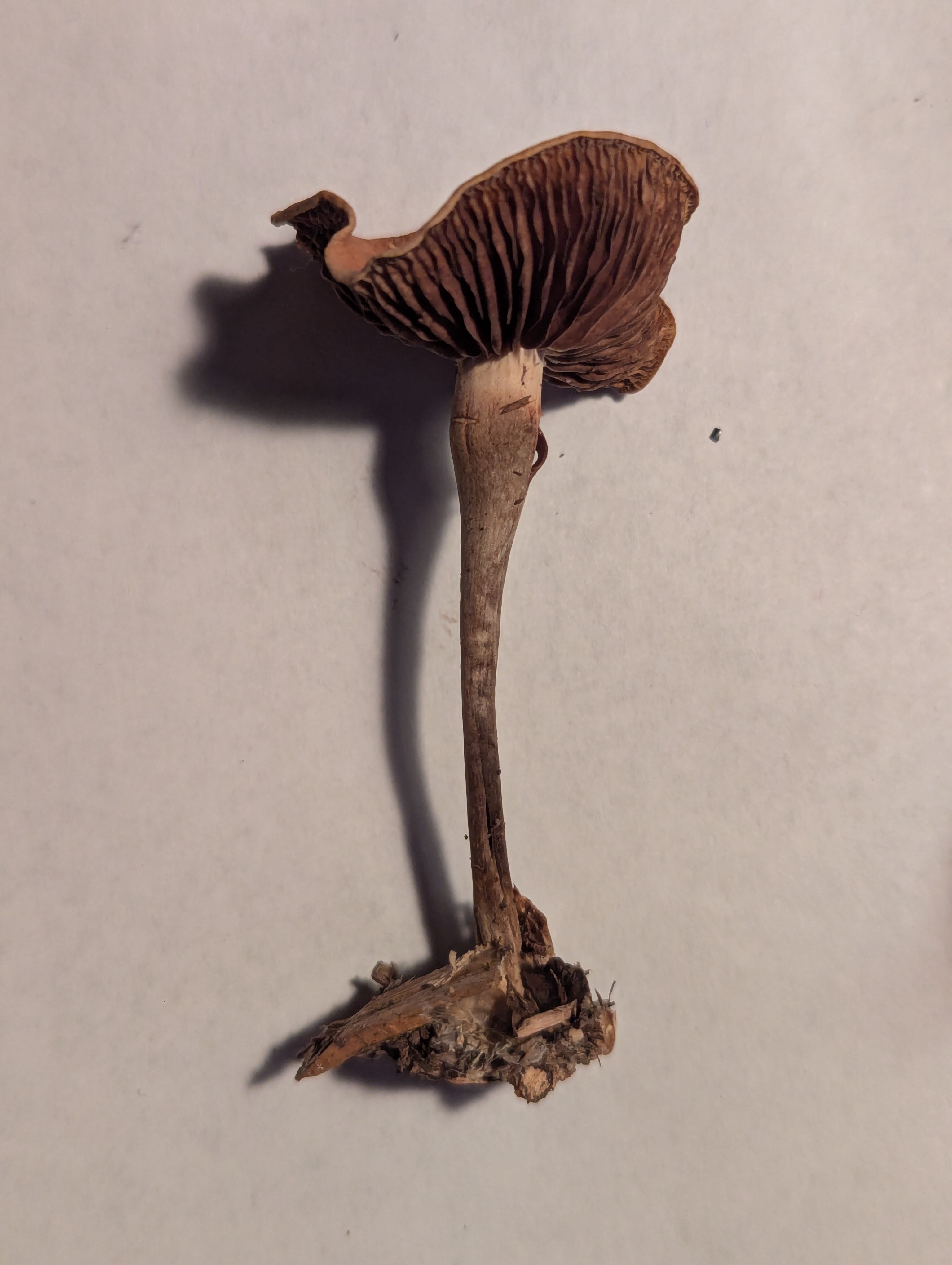
Examples of the colony, and the location/substrate in which it was growing:
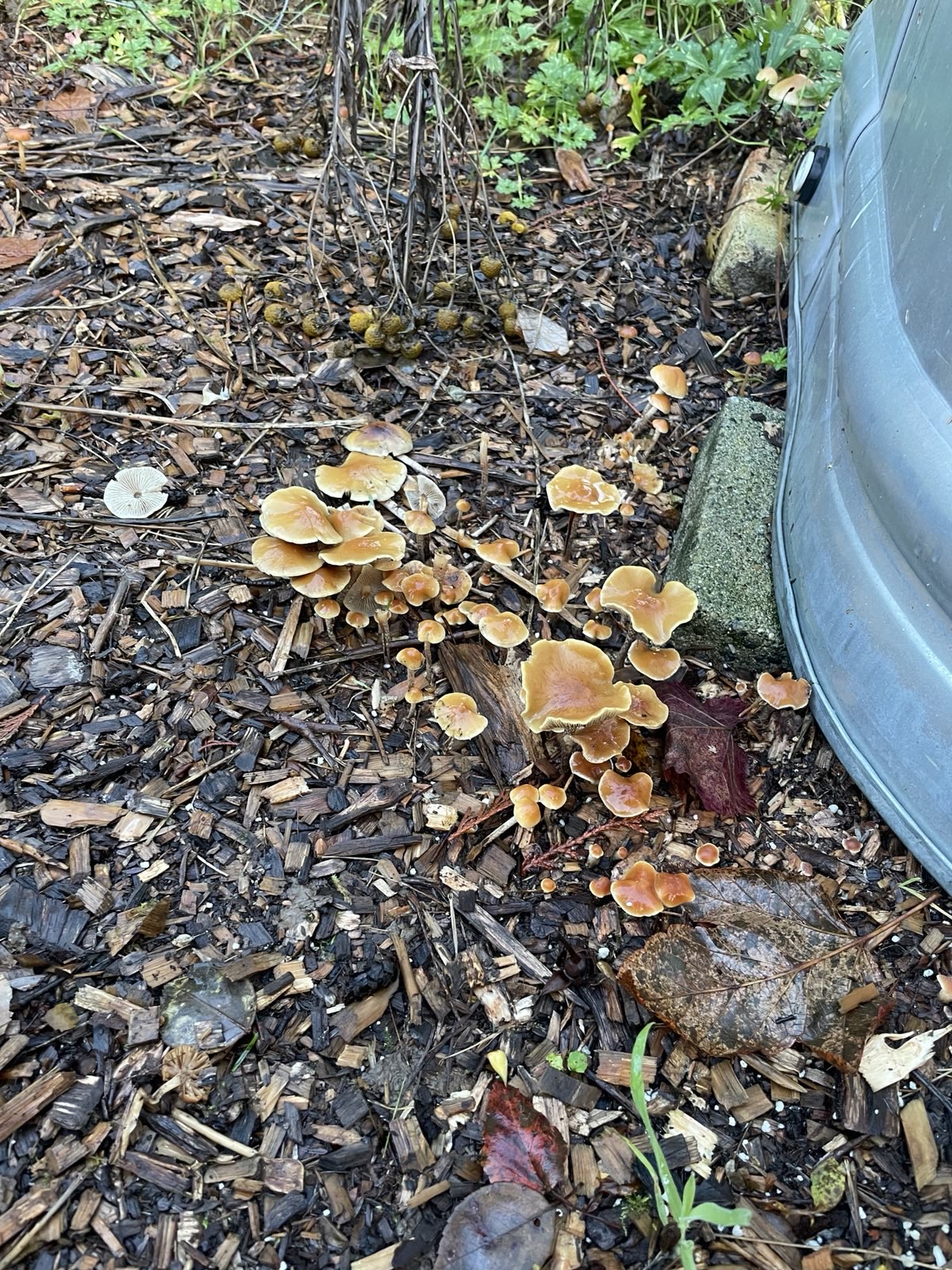

Cross-posts:












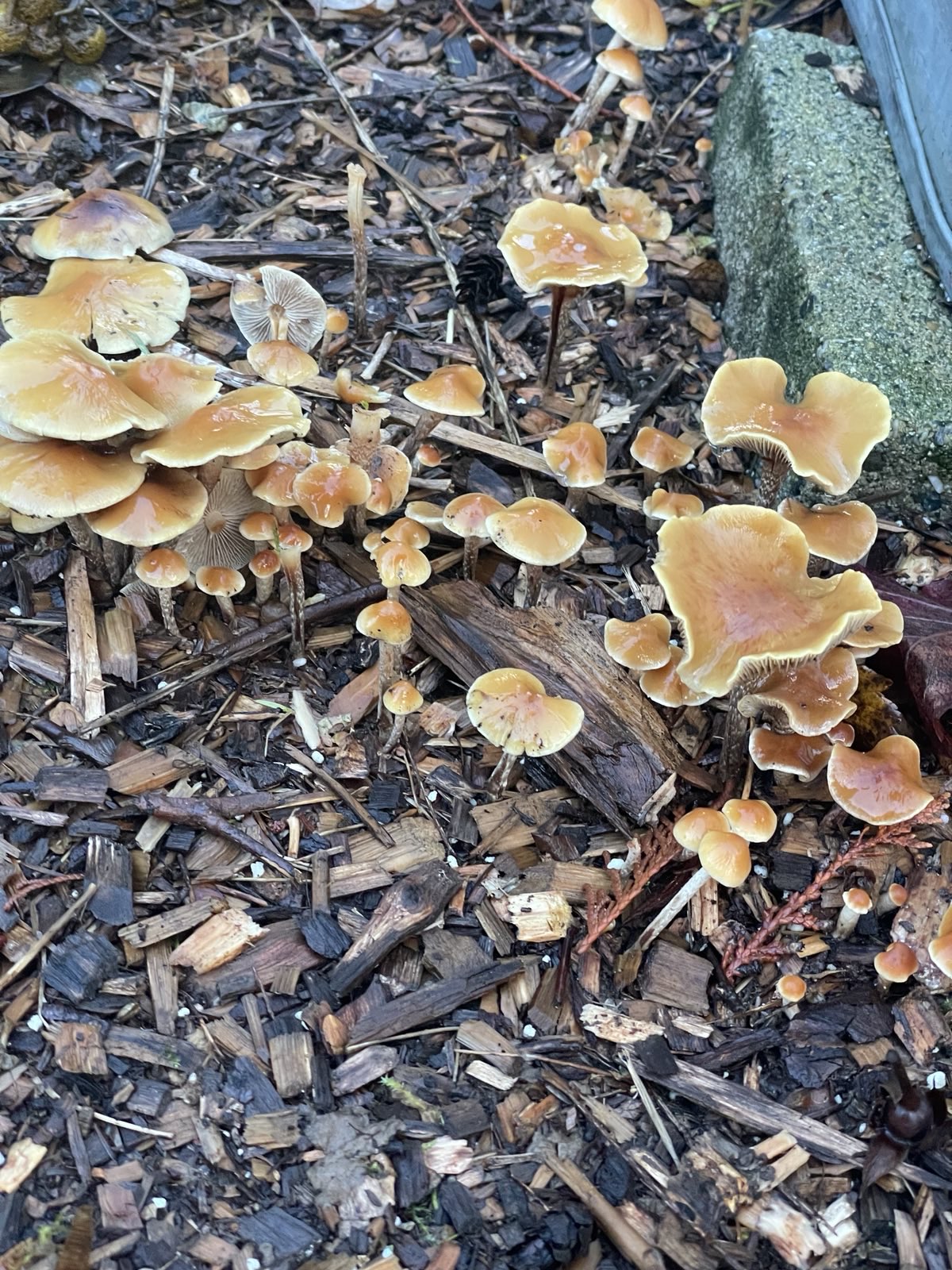
Would you by chance have a guess as to what they might actually be?
it's what we call in the field call "LBMs", little brown mushrooms 😆 It's not worth trying to ID to species, and often isn't easy to do. There are certain mushrooms I don't try that for, LBMs and Russulas are often the kinds of mushrooms I don't bother with.
My suggestion is to find a local mycology group where you can join them on forays and learn how to ID mushrooms.
Is a forum specifically about mushrooms (ie this one) not sufficient to this end? 😜
absolutely not, lol
Out of curiosity, what methods would be used to definitively identify these sorts of mushroom that make it not easy?
in the case of Russulas for example you would essentially need a strong enough microscope to inspect and measure spores, and even then it might not be enough and you would have to sequence the DNA to identify to species. Russulas also have specie-complexes so looking too closely results in having to shuffle and re-define the taxonomy.